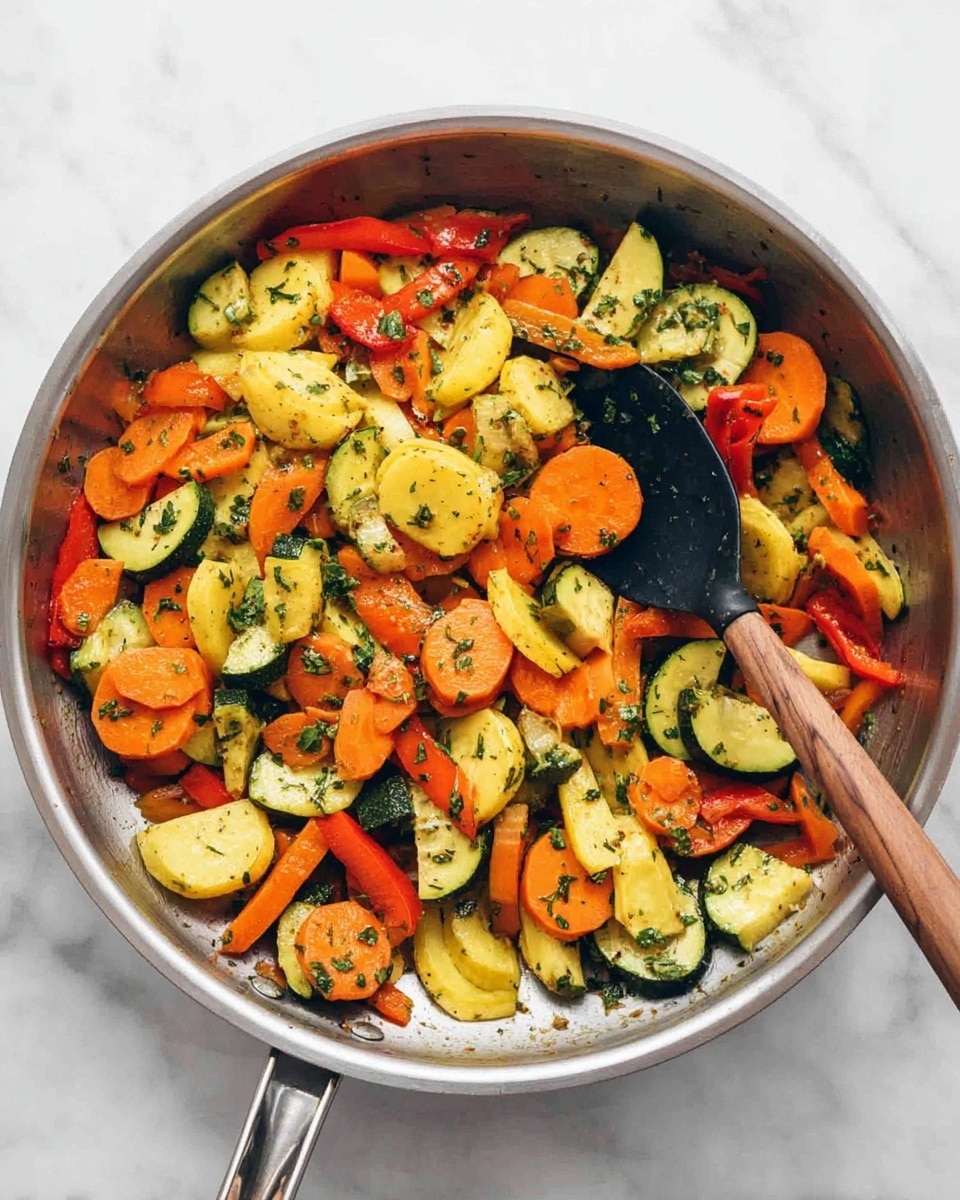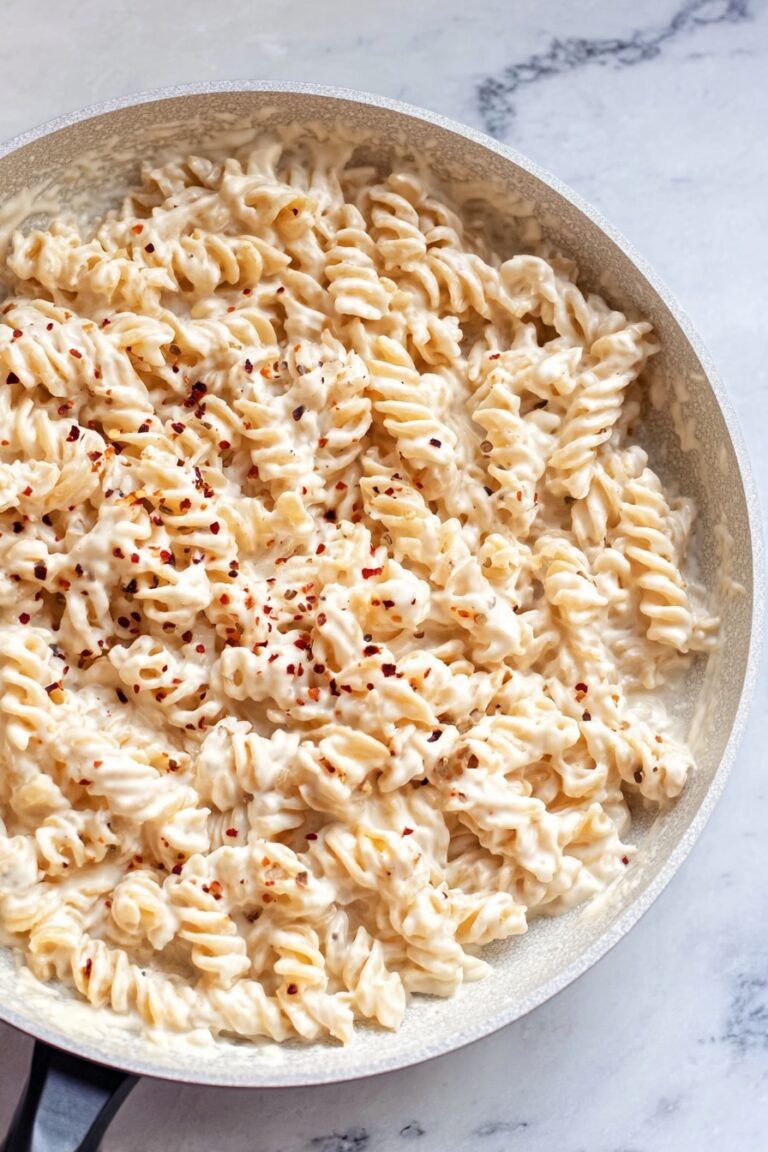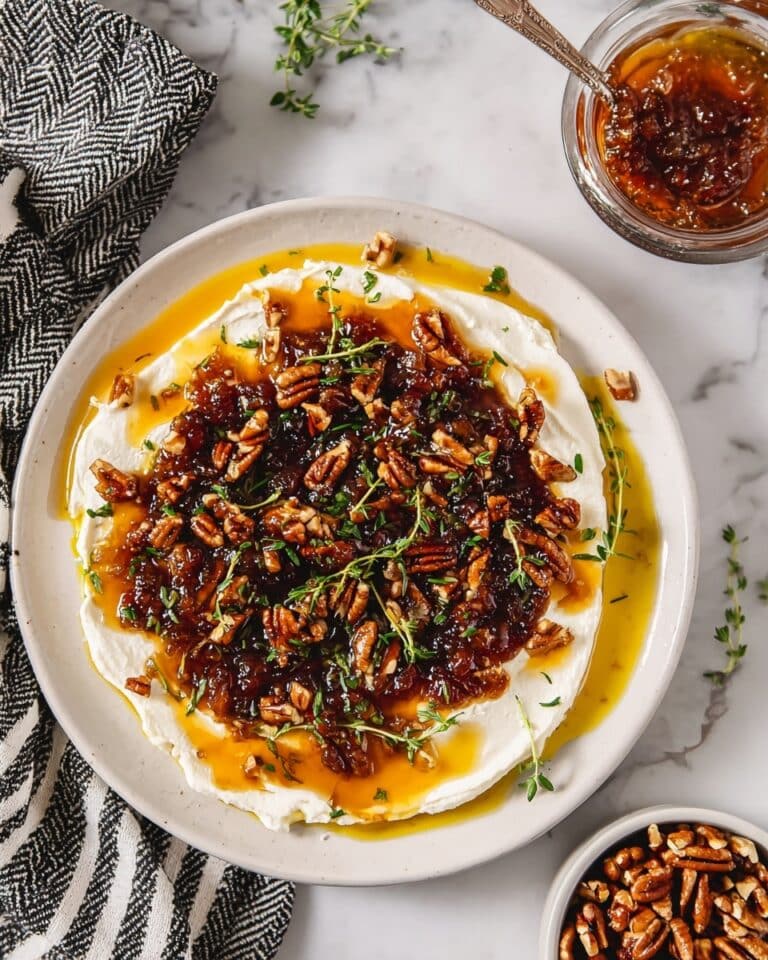Simple Sautéed Vegetables Recipe
I’m super excited to share this Simple Sautéed Vegetables Recipe with you—it’s one of those go-to dishes that feels like a cozy hug after a busy day. The beauty of it is in its simplicity: fresh veggies, a quick sear in the pan, and a touch of butter to bring everything together into something unexpectedly delicious. Seriously, this recipe is my secret weapon when I want a healthy side dish that’s ready before I even finish setting the table.
Whether you’re throwing together a weeknight dinner or looking for a bright, colorful addition to your meal, this recipe works like a charm. What I love most is how versatile it is—you can easily swap in whatever veggies you have on hand, and it still comes out shining with that perfect tender-crisp texture and subtle herb kick. Trust me, once you try this Simple Sautéed Vegetables Recipe, you’ll find yourself reaching for it again and again.
Why This Recipe Works
- Fresh Veggies Shine: Using simple, colorful vegetables keeps the flavors bright, healthy, and comforting.
- Quick Cooking Time: The method takes about 10 minutes, perfect for fast weeknight dinners or easy meal prep.
- Balanced Seasoning: A touch of herbs, garlic powder, and butter rounds out the vegetables without overpowering them.
- Flexible & Adaptable: It’s super easy to customize with your favorite veggies and seasonings to suit your mood or pantry.
Ingredients & Why They Work
The ingredients in this Simple Sautéed Vegetables Recipe come together so naturally—each one adds its own texture, sweetness, or earthiness while keeping things fresh and inviting. Plus, this mix is usually easy to find at your local market or farmer’s stand, which makes shopping stress-free.

- Carrots: Their natural sweetness and crunch add a beautiful base for the sauté.
- Zucchini: Offers light moisture and a mild flavor that soaks up the seasonings well.
- Yellow Squash: Similar to zucchini with a slightly nuttier taste, it complements the mix perfectly.
- Red Bell Pepper: Adds vibrant color and a subtle tangy sweetness that’s totally refreshing.
- Cooking Oil: Helps to prevent sticking and delivers the right amount of heat to sauté veggies evenly.
- Dried Basil: Gives a subtle herbal lift, nodding to fresh garden flavors.
- Dried Oregano: Adds earthiness and a touch of warmth that pairs beautifully with the veggies.
- Garlic Powder: An easy way to nail that savory taste without overpowering the freshness.
- Salt & Black Pepper: Essential for seasoning to bring all the flavors together.
- Butter: Finishes the dish with richness and a silky coat that makes everything pop.
- Fresh Parsley (optional): Adds a bright, fresh garnish that’s as pretty as it is tasty.
Tweak to Your Taste
One of the things I love about this Simple Sautéed Vegetables Recipe is how easy it is to make it your own. I often swap in whatever veggies are looking good at the store or add a pinch more herbs if I’m in the mood for something extra savory. Don’t be afraid to experiment—you’ll find your perfect combo in no time.
- Add Heat: I sometimes toss in a pinch of red pepper flakes when I want a little kick—it wakes up the dish without stealing the spotlight.
- Go Green: Spinach or kale are great additions late in the cooking process if you want to boost the greens.
- Make it Vegan: Swap the butter for vegan margarine or more olive oil without losing that silky finish.
- Seasoning Switch: Fresh herbs like thyme or rosemary work beautifully if you want a more aromatic profile.
Step-by-Step: How I Make Simple Sautéed Vegetables Recipe
Step 1: Prep Your Veggies
I like to start by peeling and slicing the carrots thinly so they cook quickly and evenly. Then, chopping the zucchini and yellow squash into half-moons helps them sauté nicely without turning into mush. For the red bell pepper, slicing into thin strips keeps its crunch intact. Take your time here—it makes a big difference in cooking time and texture.
Step 2: Get the Pan Hot and Sauté Carrots First
Heat your skillet over medium-high heat until it’s really hot—that’s key to getting a great sauté. Add your cooking oil and swirl the pan to coat. Then drop in the carrots and give them a good 2 to 3 minutes—this softens their edges while keeping some bite. Cooking the carrots first ensures they don’t stay too crunchy once the other veggies join in.
Step 3: Add the Rest + Herbs
Next, toss in the red bell pepper, zucchini, yellow squash, and sprinkle on the dried basil, oregano, and garlic powder. Sauté for another 2 to 3 minutes—this step is all about taking the raw edge off the veggies without turning them into mush. You’ll want them tender but still with a little snap. Keep an eye here to not overcook!
Step 4: Finish with Butter and Seasoning
Remove the skillet from heat, then add a tablespoon of butter and toss everything together until melted and glossy. This finishing touch is where those simple veggies turn into something special. Finally, season with salt and freshly cracked pepper, taste, and adjust as needed. If you like, sprinkle with some fresh chopped parsley right before serving—freshness in every bite.
Pro Tips for Making Simple Sautéed Vegetables Recipe
- Preheat the Pan Well: The veggies sizzle better, evaporate excess moisture, and develop that wonderful sautéed flavor.
- Don’t Crowd the Pan: Cooking in batches if needed keeps veggies from steaming and turning soggy.
- Cut Uniform Pieces: This ensures even cooking so no veggie gets left behind or overcooked.
- Finish Off Heat: Adding butter off the heat keeps it silky and prevents the veggies from overcooking in the residual heat of the pan.
How to Serve Simple Sautéed Vegetables Recipe

Garnishes
I almost always sprinkle fresh parsley on top, not only for the splash of green but for that fresh, slightly peppery pop it adds. Sometimes, I’ll swap in chopped fresh basil or a squeeze of lemon juice for brightness. A light drizzle of good-quality olive oil right before serving also amps up the flavor.
Side Dishes
This dish pairs beautifully with grilled chicken or fish, adding a fresh vegetable balance to your plate. I also love tossing it on top of cooked quinoa or brown rice for a quick veggie-packed bowl. For cozy dinners, it makes a lovely side with creamy mashed potatoes or garlic roasted potatoes.
Creative Ways to Present
For special occasions, I sometimes serve these sautéed veggies in little filo cups or mini tartlets for an elegant appetizer. Another fun idea is to use them as a bed for seared scallops or a runny fried egg—simple but impressive. Even plating the veggies in a colorful spiral pile makes a beautiful centerpiece.
Make Ahead and Storage
Storing Leftovers
After cooling completely, I store leftovers in an airtight container in the fridge where they stay fresh for up to 3 days. It’s a great way to have a veggie side prepped and ready to go for fast meals later in the week.
Freezing
I’ve tried freezing sautéed vegetables before, but because of their water content, the texture can get a bit soft after thawing. If you plan to freeze, spread them on a baking sheet to flash freeze first, then store in freezer bags to avoid clumps. They’re best used in cooked dishes like frittatas or soups after thawing.
Reheating
Reheat gently in a skillet over medium-low heat with a splash of oil or water to revive moisture and avoid drying out. Avoid microwaving for best texture—stir-frying leftovers quickly brings them back to life without sacrificing flavor.
FAQs
-
Can I use other vegetables in this Simple Sautéed Vegetables Recipe?
Absolutely! This recipe is super flexible. Try adding broccoli florets, snap peas, mushrooms, or green beans. Just keep an eye on cooking times since different veggies soften faster or slower than the ones listed.
-
What if I don’t have butter—can I skip it?
Yes, you can! Butter adds richness and a silky finish, but olive oil or avocado oil work fine too, especially if you want a lighter or dairy-free option. Just add a drizzle off the heat after cooking.
-
How do I keep vegetables crisp and not mushy?
The key is to cook over medium-high heat and avoid overcrowding the pan. Don’t cook too long—stop just when veggies start to soften but still have a little bite. Removing the pan from heat before adding butter also helps maintain texture.
-
Can I make this recipe gluten-free or vegan?
Yes! The recipe is naturally gluten-free. To make it vegan, just replace the butter with plant-based margarine or use extra oil. The flavor and texture stay delicious either way.
Final Thoughts
This Simple Sautéed Vegetables Recipe is one of those dishes I keep coming back to because it’s fast, flavorful, and feels like a little celebration of fresh produce every time. It’s perfect when you want a no-fuss side that still impresses with its vibrant colors and delicate herbs. I hope you enjoy making it as much as I do—it’s the kind of recipe you’ll want to share with friends and keep in your regular rotation.
Print
Simple Sautéed Vegetables Recipe
- Prep Time: 10 minutes
- Cook Time: 10 minutes
- Total Time: 20 minutes
- Yield: 4 servings
- Category: Side Dish
- Method: Stovetop
- Cuisine: American
- Diet: Vegetarian
Description
A quick and easy recipe for simple sautéed vegetables featuring carrots, zucchini, yellow squash, and red bell pepper, seasoned with dried herbs and garlic powder, finished with butter and fresh parsley for a flavorful and healthy side dish.
Ingredients
Vegetables
- 3 carrots
- 1 zucchini
- 1 yellow squash
- 1/2 red bell pepper
Seasonings and Fat
- 1 tablespoon cooking oil
- 1/4 teaspoon dried basil
- 1/8 teaspoon dried oregano
- 1/8 teaspoon garlic powder
- 1/8 teaspoon salt
- 1/8 teaspoon freshly cracked black pepper
- 1 tablespoon butter
- 1 tablespoon chopped fresh parsley (optional)
Instructions
- Prepare the vegetables. Peel and slice the carrots. Chop the zucchini and yellow squash into half-rounds. Slice the red bell pepper into strips.
- Heat the skillet. Place a skillet over medium-high heat and allow it to become very hot. Add the cooking oil and swirl to coat the surface evenly.
- Sauté the carrots. Add the sliced carrots to the skillet and sauté for about 3 minutes until they start to soften.
- Add remaining vegetables and spices. Add the bell pepper, zucchini, yellow squash, dried basil, dried oregano, and garlic powder to the skillet. Continue to sauté for another 3 minutes or until the vegetables just begin to soften but still retain some crispness.
- Finish with butter and seasoning. Remove the skillet from heat, add the butter, and toss the vegetables until the butter melts and evenly coats them. Season with salt and freshly cracked black pepper to taste. Garnish with fresh chopped parsley before serving if desired.
Notes
- Use any combination of fresh vegetables you like to customize this dish.
- To maintain a crisp texture, do not overcook the vegetables; they should be tender but still slightly firm.
- Butter can be substituted with olive oil for a dairy-free version.
- Fresh herbs like thyme or rosemary can be used in place of dried basil and oregano.
- Serve immediately for best flavor and texture.
Nutrition
- Serving Size: 1 serving
- Calories: 90 kcal
- Sugar: 5 g
- Sodium: 150 mg
- Fat: 5 g
- Saturated Fat: 2 g
- Unsaturated Fat: 3 g
- Trans Fat: 0 g
- Carbohydrates: 10 g
- Fiber: 3 g
- Protein: 1 g
- Cholesterol: 10 mg








